Communication is at the core of an effective energy management system, and is a key tool to inform, train and motivate.
The aim is that everyone should be able to take active part in the efforts to improve the energy performance. This requires good communication plans and platforms, both internally and externally.
There is no reason to reinvent the wheel! All existing communication channels used in quality, production, safety and environment can be used.

![]() What should be done
What should be done
Internal and external communications should be handled differently, because the recipients have different needs. Remember that informal communication about energy efficiency, for example between OIM and operations engineers is also an important element. Put energy on the agenda, in formal and informal settings.
To get a good overview you should prepare a communication plan that includes:
- Who is responsible for communication
- What information should be communicated
- How to communicate it
| Themes for communication |
|---|
|
Do not forget that communication also goes the other way, from the employees with good ideas and comments to those further involved in energy management in the company. This requires a system to collect and process feedback, and to tell what has been done with the ideas afterwards. Seeing that ideas are taken seriously helps increasing the motivation to come up with more suggestions.
Great tips and advice can often be obtained by involving the communications department, both to sharpen the message and to ensure good visual presentation.
The industry project included a group exercise on communication. The figure below illustrates answers to the question: What kind of communication channels / systems we need to improve energy efficiency (existing and new ideas). A higher score indicates greater importance.
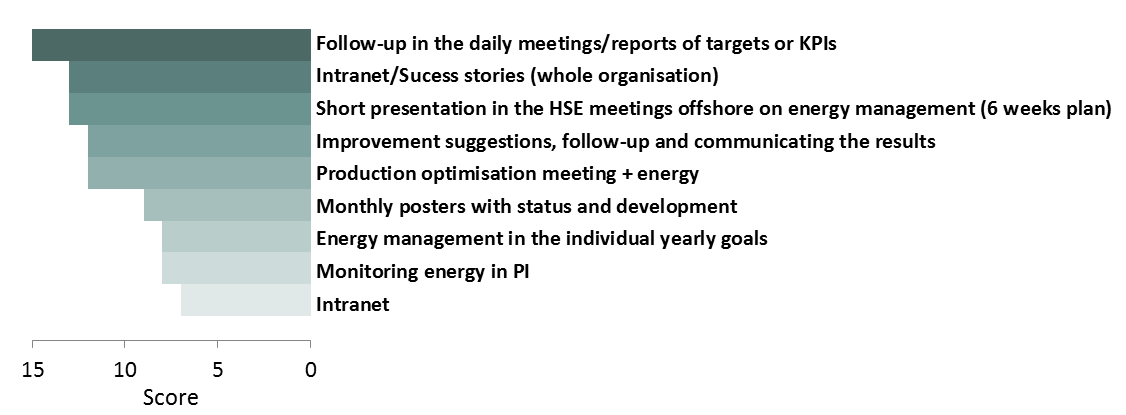
![]() Who should be involved
Who should be involved
Typically the energy leader should initiate and manage communications related to energy management. If necessary, consider involving the following:
- Communication department: for sharpening the message, chosing the channels, visual representation and distribution.
- Energy team: for selecting the relevant topics, collecting data, analysis and results.
- HSE responsible to exchange experience in the communication of safety and environmental issues.
- Production responsible
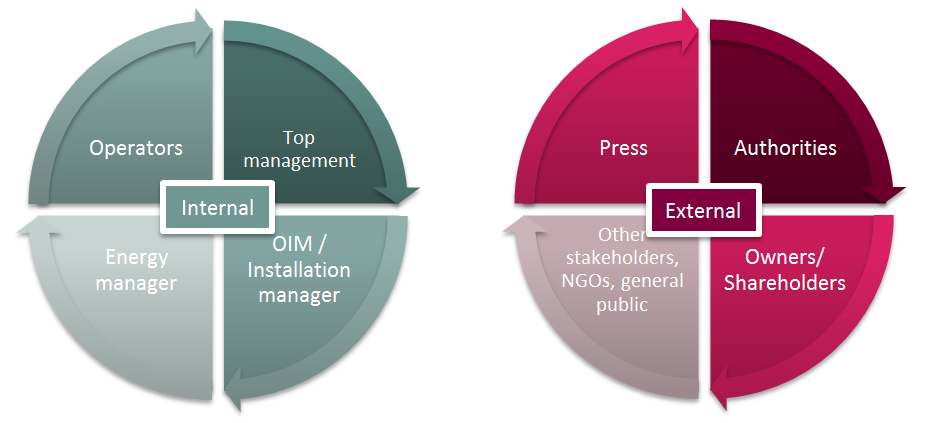
![]() What should be documented
What should be documented
The following should be documented for internal and external communication:
- The communication system shall be designed in relation to the size of the organization so that energy performance is communicated. In practice this means that everyone should be informed about the energy performance.
- That there is a system in place for submitting and following-up suggestions
- The communication plan
- External communications, if relevant, must be documented in a communication plan. If it is not relevant, the management shall document the decision.
![]() Challenges and opporunities
Challenges and opporunities
Lack of awareness about energy management and energy efficiency in the company
Awareness is the key. Include energy as a theme in all relevant communications arenas, at morning meetings, daily and weekly reports, intranet, etc. so that it is part of daily conversation. This requires repetition over time.
It is difficult to visualize the results in a format that all employees can understand
It is important to relate to the figures presented. Unless the message is uniquely directed to technical personnel with a good understanding of what the results mean it is effective to convert the results to known units. Difficult units: MWh, Sm3 fuel gas, tons of CO2. Easier units: money saved, % improvement, emissions compared to an ordinary passenger car during a year, etc.
The shifts do not talk, and the plant will therefore be run differently depending on which shift is onboard
Identify enthusiasts (“champions”) on every shift and link them together in an informal network with similar enthusiasts on the other shifts to inspire and motivate. Update operating procedures so that good practices are being copied from one shift to the other. Communicate progress and consider rewards for shifts that have a good energy performance and / or have improved the most.
Formal communication lines are not established for themes relating to energy efficient operation
Use similar format as the already established communication lines in production, safety and environment and give responsibilities to the line.
There is commitment present during concerted efforts, but reduced during daily operation
Getting energy on the agenda is a change process that takes time. Continuous focus and regular communication helps to get the topic on the agenda and for it to gradually sink in. Remember to highlight the results and progress along the way.
![]() Energy management in practice
Energy management in practice
| Repsol has good experience with energy management and internal communication |
|---|
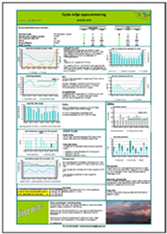
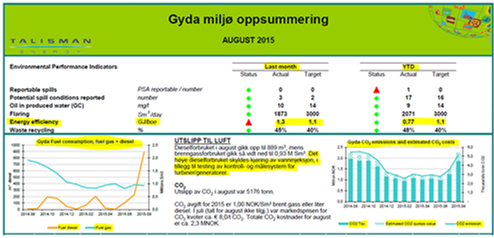
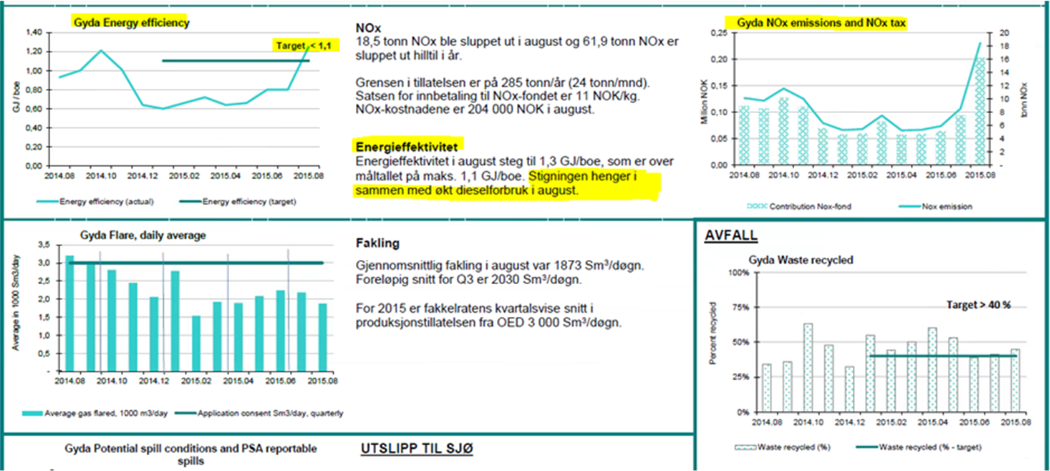
|
![]() Where do you find this in ISO 50001?
Where do you find this in ISO 50001?
- Chapter 4.5.3 – Communication

